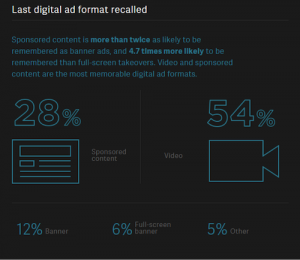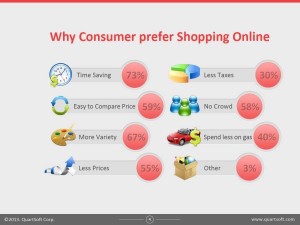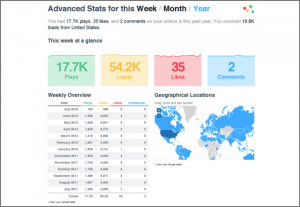As more consumers look to deal with their banks online, banks need to know the impact of email campaigns. Columnist Jose Cebrian discusses some key tactics.

For most industries, email is generally considered a very high ROI marketing channel. But the retail banking sector seems to be an exception to this rule.
It’s not that retail banks don’t use email. In fact, most banks are very good at it and have tight operational controls over the channel. They even tend to have a comprehensive view of the customer, given the amount they spend in consumer data integration (CDI) and general prowess in analytics.
In other words, banks have the people-based marketing assets most companies would love to have, yet they don’t always know how to accurately measure the effectiveness of their email campaigns. In fact, one retail bank once told me, “We don’t even measure email.” What he meant was that they don’t ascribe a value to it beyond engagement, as measured by open and click rates.
Before we get into specific tactics on how you can measure the impact of email on your customer base, it’s important to note that to properly evaluate email, you need to use a marketing database to understand the lift and impact that can be attributed to email.
Unfortunately, that’s not always possible, due to priority, access and so on. In these cases, you can use proxies to estimate revenue generated and justify investment.
As anyone with P&L (profit and loss) responsibility knows, improving ROI requires either reducing costs or driving additional revenue. When we look at opportunities to drive revenue, we’re generally referring to either value-adds, which enhance customer satisfaction and improve their experience, or more direct revenue drivers, where there’s a clearer line between a promotion and additional revenue from that customer.
What’s important is to measure the impact of each to get a full picture and to use that knowledge to invest appropriately.
Reducing costs
• Paperless statements. While not new, they save a ton of money versus sending out traditional paper versions. By getting individuals to sign up for paperless statements, a very simple value can be ascribed to each new customer. For example, if each statement costs $1 to produce and mail, then getting 100,000 to sign up saves $100,000 per statement cycle.
• Regulated notifications sent electronically. The same principle applies for the myriad of regulated notifications that need to be sent for several reasons. As above, they have an inherent value as a cost take-out.
The trick with these is that you need to be ready with the print version if you get a bounce. So, the actual calculation is the total sent multiplied by the cost savings per notification less print costs due to bounces.
Driving revenue: Value-adds
• Traditional communications. Welcome kits and early-month-on-books (EMOB) communications are important communication streams. Banks spend a lot of money on print communications for new customers in each line of business.
The purpose of that spend is to drive customers to set up certain features, make deposits, use loans, spend on a credit card and more. These communications have highly predictable rates of return that many marketing managers don’t want to fuss with.
Email can enhance these communications. It can be used to replace or augment a print communication.
Both tactics need to be tested, but email is faster and cheaper and enables quicker response to actions taken by the account owner.
For example, if a welcome stream promotes direct deposit and a customer has already set up that feature, email has a better chance of reacting to that information and promoting an alternative message that drives value. In terms of measuring the value of email, you need to test it to determine how much to use and its value.
If you take the example of a welcome stream that is normally sent via direct mail, there are two basic sets of tests one can do:
• Augment the welcome stream with email communications to see if you can drive lift for the program. In this case, if we send an email coordinated with a direct mail piece, do we see a lift in uptake (deposits, direct deposit, online bill pay and so on) for new customers? If so, then we can determine the value of email.
• Another option is to replace print with an email communications program. This has to be tested to determine if email can stand alone. I am confident about email as a channel, but I would want the decision to be based on facts about improvement in customer results, not just cost take-out, which is an easy decision.
Driving revenue: Add-on services and features
• App downloads. Banks have transformed their businesses with mobile apps. Apps can build competitive advantage and create a lot of “stickiness.”
Promoting apps via email (whether a single email or as part of another email) can drive downloads, which presumably increases retention and has a value. One can estimate return by multiplying that app retention value by the number of apps downloaded and used.
• Direct deposit. Like app usage, direct deposit creates a closer tie between a bank and an individual. Promoting direct deposit and getting people to direct their paychecks to your bank automatically adds a level of intimacy that requires effort to undo.
Direct deposit customers have a higher value than non-direct deposit customers, so by getting someone to sign up for direct deposit, value can be determined.
• New products. Whether it is insurance, a credit card, a new account type or something else, email can be used to communicate value about a specific product to a target individual. The issue with this is that most of these transactions occur outside of the web, so measurement requires more analysis.
This is one of those cases that requires a marketing database to understand who was promoted to and determine the lift versus a control group. With that information, ROI can be determined.
For highly regulated industries like banks, which have traditionally been forced to operate in a paper/direct mail world, the opportunity that email and digital communications hold is large and often underestimated. As consumers become increasingly comfortable dealing with their banks online, banks need to be ready to communicate effectively with their prospects and clients via digital channels.
Adding more functionality in the digital space can be costly. Online marketing managers at banks must be able to prove ROI on existing and new digital communications to bolster their cases to internal leadership and continue to drive their organizations into the digital banking future.
Some opinions expressed in this article may be those of a guest author and not necessarily Marketing Land. Staff authors are listed here.
Marketing Land – Internet Marketing News, Strategies & Tips
(78)
Report Post







